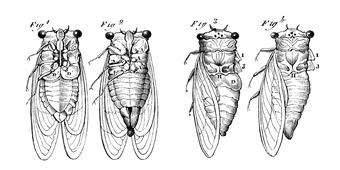What drives biological synchrony?

Ecologists traditionally attribute population explosions, be they of diseases or animals, to broad environmental conditions. But new data suggest that other factors may drive "synchrony": rapid, widespread rises and falls in populations.
"[Species] that go into synchrony may be more subject to extinction" because a single driver can trigger a collapse, says Alan Hastings, a mathematical biologist at UC Davis. Understanding synchrony would be of great help in agriculture, he adds, as staggered ripening of fruit trees and other produce is best for suppliers
and consumers alike.
To investigate the drivers of synchrony, Hastings, External Professor Jon Machta (UC Davis), and Andrew Noble (University of Massachusetts, Amherst) organized a working group at SFI in 2015. Participants explored variations, measures, and early indicators of synchrony. For consequent research, they chose data from periodical cicadas and larch bud moths. The cicadas spend most of their lives as underground nymphs, emerging after 13 or 17 years. The bud moths feed on larch needles in Europe and, of special interest to the project, their recorded history includes dendrochronological samples gathered in Switzerland that indicate outbreaks dating back 300 years.
Once the group confirmed that the data were robust (or at least "good by ecological standards"), they drew from each species' survivorship, predation of adults, and other factors to develop a nonspatial model – one that offers population predictions for a single location.
At this year's followup gathering, Hastings says the group plans to finish the model and search for ties to statistical physics. The researchers also plan to discuss how to expand their model to population spatial dynamics to analyze and predict boundaries between broods throughout a species' range.
The research has prompted intriguing new questions, among them: How did periodical cicadas manage to establish themselves over so much of North America considering the last glaciation was only 10,000 years ago?
Provided by Santa Fe Institute




















